The 10 Most Dangerous Animals in India


Animals are great as pets... Only some species, though. Wild animals live by their own rules, and some of them have evolved particular characteristics that make them extremely dangerous.
India is known for its rich wildlife diversity and animal-friendly culture. However, from the deadly king cobra to the lethal Bengal tiger, there are many dangerous animals in India. What is the deadliest of them all? Is it the threatening shark or the gentle elephant which becomes an angry giant when provoked? Let's find out.
Stay with us at AnimalWised and discover what are the 10 most dangerous animals in India.
- Venomous snakes in India: The Big Four
- The national animal of India: The Bengal tiger
- The Asian black bear of the Himalayas
- The Indian leopard on the prowl
- Rogue Asian elephants
- The Indian red scorpion
- Mosquitos and related dangers
- Crocodile attacks in India
- Box jellyfish in Goa
- Are there dangerous sharks in India?
Venomous snakes in India: The Big Four
Snakes are the deadliest animals of India. Around 50,000 people die each year due to snake bites in this country, as there are many different venomous snakes that inhabit the subcontinent. However, the most dangerous snakes in India are the ones included in the Big Four.
Indian or spectacled cobra
Scientifically known as Naja naja. The Indian cobra is also called "Nag", as "nagá" means "cobra" in Sanskrit. This native species of the Indian subcontinent is worshiped by Hindus in festivals like Nag Panchami, which takes place in the summer. Nagas, or divine serpents, are the guardians of water sources. You can read more about the sacred animals of Hinduism here.
The venom of an Indian cobra attacks the nervous system and causes paralysis and cardiac and respiratory failure. With proper treatment in time, however, the chances of survival are good. The Indian or spectacled cobra is protected under the Indian Wildlife Protection legislation.
Common krait
Scientifically known as Bungarus caerulus. The common or Indian krait is one of the most venomous snakes in India, having a strong venom that causes paralysis and suffocation. If you are bitten by a common krait, apply pressure to the bitten area and immobilize it; go to the hospital immediately, even if it doesn't hurt.
Common kraits are quite large, as they can reach 175 cm (5'9'') long. They occur across very different habitats, from jungles to inside hidden nooks in homes. Indian kraits are also notable for eating other younger kraits.
Russell's viper
Scientifically known as Daboia ruselii. Russell's or chain vipers are found throughout the Indian subcontinent and beyond, reaching Taiwan. This is a notable member of the Big Four, as it's responsible for the maximum number of snake bites and related deaths in India.
Russell's vipers can grow to 165 cm (5'5'') long. Their venom affects the blood and internal organs, and their bite is very painful. There is an antivenom, but better versions are still being researched. Russell's vipers inhabit open areas like plains or lowlands, but also in urban areas.
Saw-scaled viper
Scientifically known as Echis carinatus. The saw-scaled or little Indian viper is smaller than the previously described species, but it's also a venomous snake of India that causes a significant number of deaths. A saw-scaled viper bite causes swelling and affect the bloodstream. There is an antivenom, that must be applied as soon as possible. The saw-scaled viper is a native animal of the Thar desert.
Saw-scaled vipers grow to 80 cm (31 in) at the most, and they are covered with keeled scales, that is, their scales have a central ridge. They show different colors, but they are recognizable by white spots and bows. These little vipers live under rocks in sandy or scrubby habitats.
There are more than 450 species of venomous snakes in the world, and 250 are deadly to humans. India is home of some of the most dangerous species in the world. Besides the Big Four, you can also find:
- King cobra (Ophiophagus hannah): Found in the forests of the Indian subcontinent, the king cobra is the world's longest poisonous snake. It can reach 5.7 m (18'8''), and it is considered to be dangerous in its encounters with humans. The king cobra feeds on small pythons, rat snakes and other small animals.
- Indian rock python or black-tailed python (Python molurus): At 3 m (9'8'') long, this is one of the biggest python species found in India - the Asiatic reticulated python is the other. The Indian rock python is one of the most dangerous animals in India, as it is known to crush its victims.
Here you can learn more about the 10 most venomous animals in the world.

The national animal of India: The Bengal tiger
The Bengal tiger, scientifically known as Panthera tigris tigris, is another extremely dangerous animal of India. It is also called "Royal Bengal tiger" because of its size, beauty and cultural status, but it's also the deadliest of all big cats, killing about 80 people annually in India.
Some regions have more "maneating" tiger incidents than others; the Bengal tigers of the Sunderbans are known for this, since that is the region with the biggest Bengal tiger populations and the site of most attacks. The Bengal tigers of the Garhwal region have also been deadly to humans.
While the Bengal tiger is dangerous to humans, and one of the most dangerous animals in India, humans are way more dangerous to Bengal tigers. Humans have mercilessly hunted these animals and destroyed their habitat, pushing them to turn to regions and food sources they wouldn't naturally use. The Bengal tiger is now an endangered species that barely surpasses 2,000 individuals; you can discover more about why is the Bengal tiger endangered here.
Here you can learn more about the endangered animals of India with detailed descriptions and pictures.

The Asian black bear of the Himalayas
The Himalayan region of India is home to two bear species, the Asian black bear (Ursus thibetanus) and the brown bear (Ursus arctos). Of the two, the Asian black bear is the most dangerous one.
The Asian black bear is aggressive by nature and can attack without any purpose. Black bear attacks on humans are the highest as compared to brown bears, and it's villagers in jungles of India are most at risk. These Indian bears are likely to attack those they come across in what they consider their territory, although they prefer to simply avoid contact with humans.
Asian black bears are also called "moon bears" and "white-chested bears" because of their white spot on their chest shaped like a crescent moon. They are omnivorous, but they prefer fruits, vegetables and honey; a black bear would never attack a person for food.

The Indian leopard on the prowl
The Indian leopard (Panthera pardus fusca) is one of the big cats found across India. Leopard attacks are on the rise in India as their habitat shrinks and forest cover depletes.
The Leopard of Panar was reported to be responsible for about 400 deaths in the beginning of the 20th Century, while the Leopard of Rudraprayag killed more than 100 people. Both maneating leopards were hunted by Jim Corbett, a famous maneating cat hunter and tracker.
However, such sprees are exceptions. The Indian leopard is one of the most dangerous animals in India, but attacks are often due to declining natural habitat and shortage of prey, which pushes the leopard to hunting humans in rural areas. Increased attacks on humans are the result of leopards finding them easy prey, not because of any innate bloodthirst.

Rogue Asian elephants
Asian elephants (Elephas maximus) may look like gentle giants, but they can be dangerous when roused, especially females with calves that feel threatened. The Indian elephant (E. m. indicus) is native to mainland India, where they inhabit grasslands, tropical forests and scrublands. Sadly, the population has decreased at least in half in the last decades.
Wild Asian elephants enter the region of India each year, looking for food and destroying all crops in their way. Asian elephants stray into farms and human settlements because of habitat loss and degradation. According to some estimates, more than 100 people die in India because of elephant attacks. In the Northeastern state of Assam, 239 people were reportedly killed by elephants between 2001 and 2006.
Here you can find out all about escaping from an elephant attack.
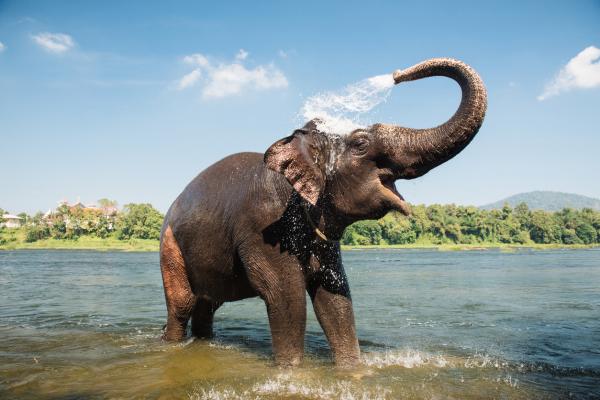
The Indian red scorpion
There are 86 different species of scorpions found in India. Of these, 50 are deadly. The giant forest scorpion (Heterometrus swammerdami) is known for being the largest scorpion in the world at 23 cm (9 in) long, but it isn't very venomous.
On the other hand, the smaller Indian red scorpion (Hottentotta tamulus) is known to kill around 50 to 80 people in India each year. It is considered the most dangerous scorpion in the world and one of the most dangerous animals in India, as its venom causes pulmonary edema. An Indian red scorpion sting is treated with prazosin.
It inhabits a wide range of habitats, although it prefers humidity, and it's found in rural areas close to human settlements.

Mosquitos and related dangers
It is well known that these blood sucking parasites can be extremely harmful to health. Mosquitoes are not dangerous by themselves, but they can carry infectious and viral diseases from malaria to dengue which can cause death.
A bite from a female Anopheles mosquito can cause malaria, while Aedes Aegypti is the name of another mosquito that can cause diseases like dengue, chikunguniya, Zika fever and yellow fever. Mosquito-spread diseases cause thousands of deaths per year in India.
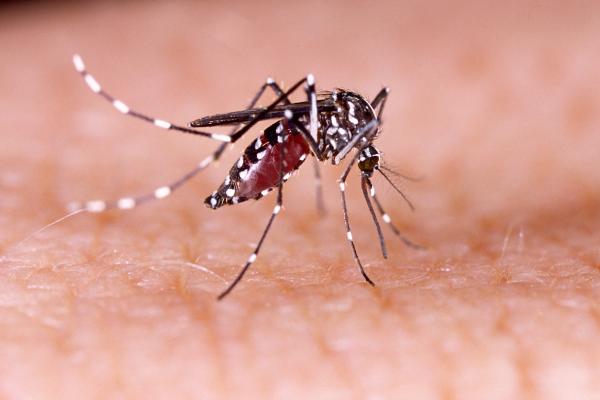
Crocodile attacks in India
The largest species of crocodiles can be deadly because they strike before a person can even react. The saltwater crocodile (Crocodylus porosus) and the Nile crocodile (Crocodylus niloticus) are the most dangerous of all crocodile species, killing many people in South East Asia and Africa.
The saltwater crocodile is particularly dangerous, as it is the largest reptile and the biggest terrestrial predator in the world at 6.3 m (20'7'') long. It is dangerous and found in mangrove swamps, lagoons, and deltas. They can be found in the eastern coast of India.
Natives of rivers and lakes, crocodiles are extremely dangerous in close proximity. Mugger or Indian crocodiles (Crocodylus palustris) in Kerala, the Cauvery River and the Andaman Islands have been known to attack humans. They are smaller than saltwater crocodiles, reaching 5 m (16') long.
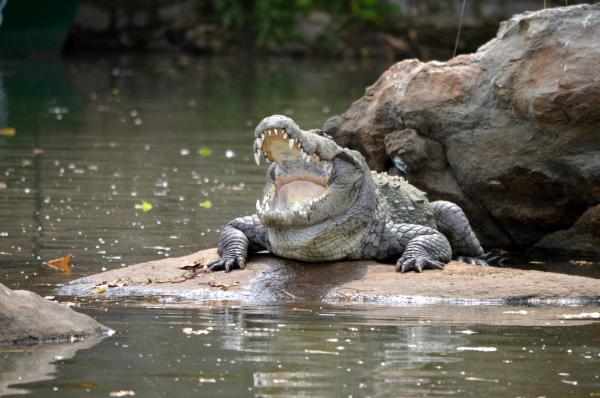
Box jellyfish in Goa
Box jellyfish are a class of jellyfish that are particularly dangerous, and they have caused many human deaths. Research shows that Chironex fleckeri, the sea wasp, can cause death in minutes. This species has killed more than 60 people in the coasts of Oceania and Asia, and it is one of the most dangerous animals in Australia.
The Times of India has reported dangerous box jellyfish and Portuguese man o' war (Physalia physalis) in the coast of Goa.
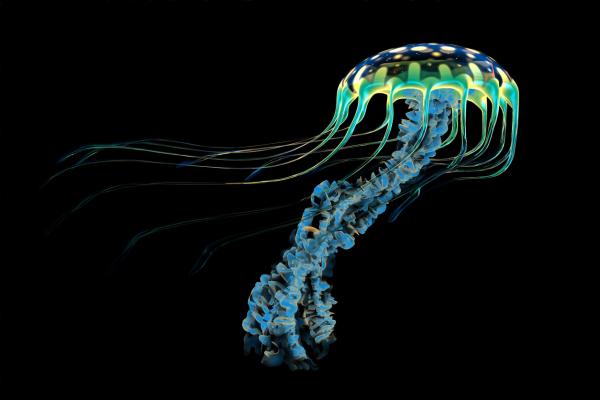
Are there dangerous sharks in India?
There are four kinds of sharks that have attacked humans without any provocation. Peter Benchley's Jaws - made into a famous movie by Steven Spielberg - shows how deadly the great white shark (Cachoron carcharias) can be.
With hundreds of cases of attacks since the 1990s, the great white shark easily qualifies as one of the deadliest animals on this list. Its range is not exclusive to the coasts of India; the great white inhabits most of the oceans in the world.
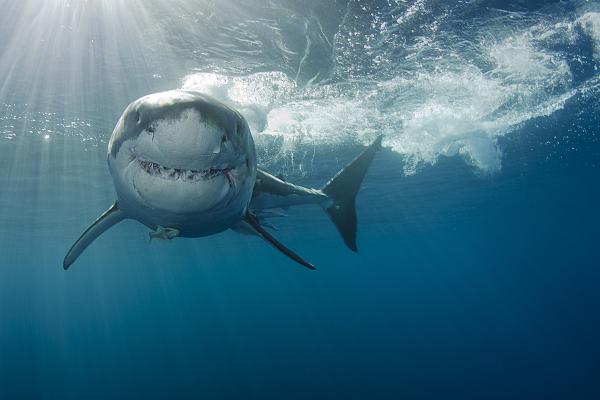
These are the 10 most dangerous animals in India. You must remember that animals will attack mostly if they are hungry or their territory is invaded; unprovoked attacks are unlikely to happen, and only come from the most ferocious specimens.
If you live in India or you're planning on visiting the country, remember to take precautions while trekking in the wild or swimming; always have a phone at hand, and if you are bitten or stung go immediately to the hospital.
Stay with us and learn all about the animal kingdom:
If you want to read similar articles to The 10 Most Dangerous Animals in India, we recommend you visit our Facts about the animal kingdom category.















